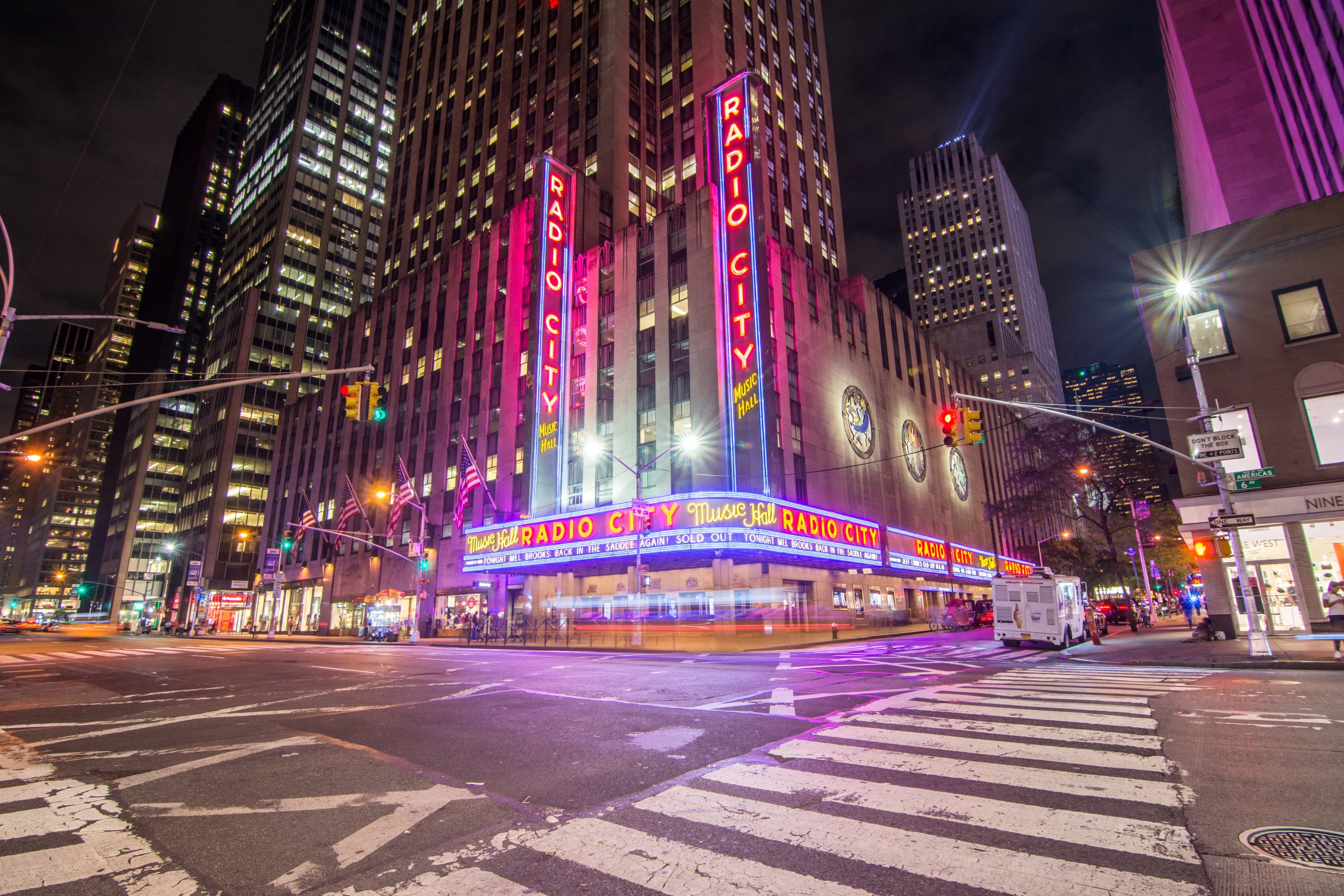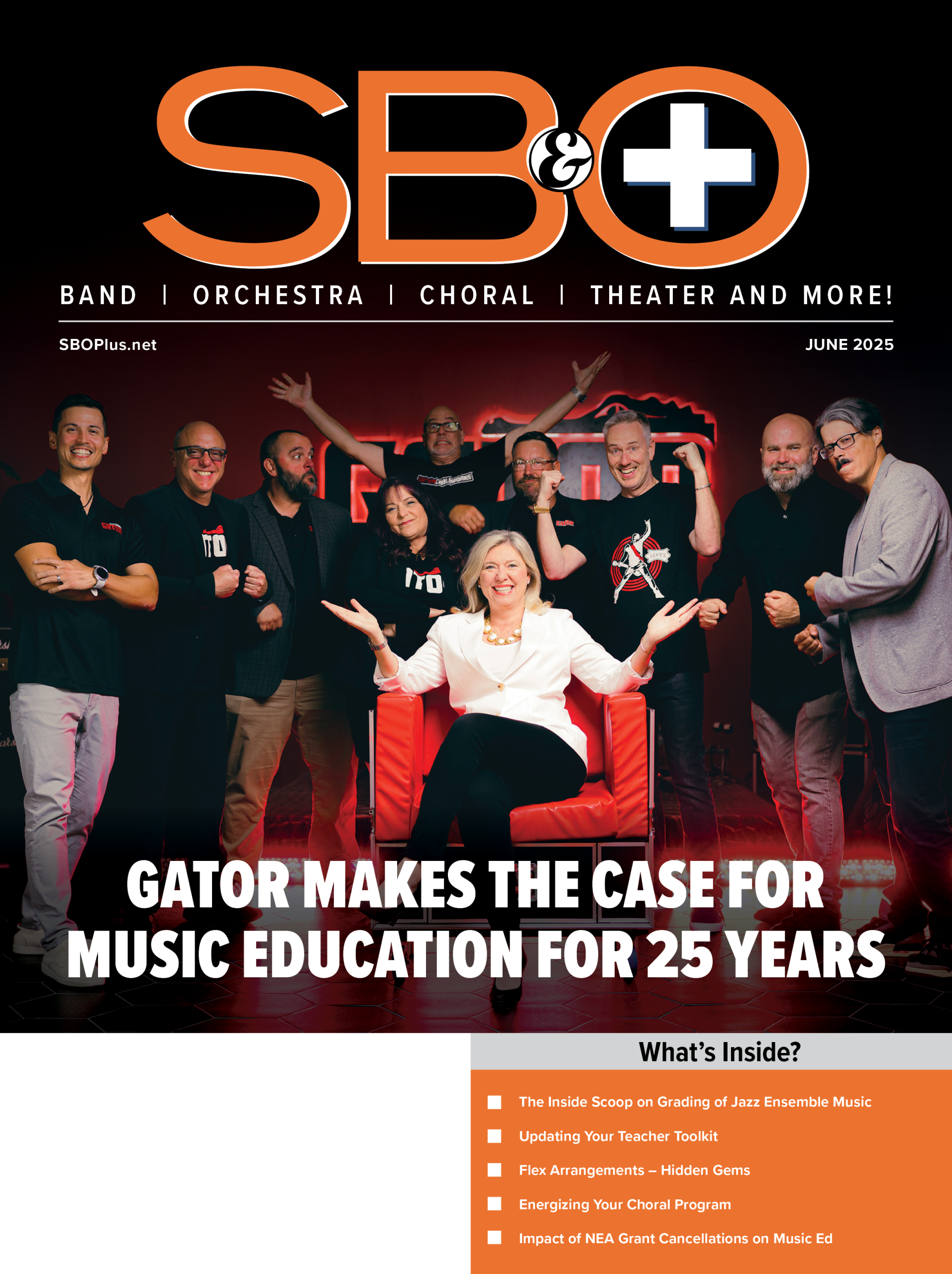It began about 15 years ago with one teacher’s vision: an efficient, streamlined music education program at W.C. Pryor Middle School in Ft. Walton Beach, Fla. As band director Jeff Adams saw it, the introduction of music technology to his middle school program could effectively “multiply” his ability to teach his students the fundamentals of music. Instead of being one music teacher in a roomful of students, he could extend his teaching capabilities to 20 computer screens around the classroom.
“I saw the potential for the technology to let me, for example, spend more time with the kids who were having problems, and the students who were not having problems could go on the computer and be doing other things. The computers would either guide their instruction or guide their evaluation,” Adams notes.
While the school’s band room did not exactly fit his vision for a computer lab, Adams improvised by emptying out storage closets and occupying a hallway to house computer workstations. The uniform closet, an instrument closet and a practice room each have a computer in them now, and 13 computers line the hallway-turned-computer bank.
“The idea is that, even if you have only one computer in your office, there are things that you could do that would supplement for your students,” he points out.
Acquiring hardware for his music program happened a few computers at a time. A nearby Air Force base provided surplus equipment, which Adams and a team of committed parents spent a year constructing and rebuilding. (After hearing about his vision, Adams’ principal sent him to a computer repair class.)
By the end of that year, we had about eight computers – four Macs and four PCs – rolling on a mini network,” Adams recounts. “It was a lot of work and if I hadn’t had a great deal of parent help I would have given up.”
The next year, three more computers came from a county incentive program called Top Notch Technology Teachers. Following that installation, a technology grant program brought eight more computers into Adams’ classroom.
One of his favorite pieces of equipment is a ceiling-mounted LCD projector that casts images from his laptop onto a six-foot screen for the entire class to see.
“Yesterday, I used it for a sight-reading study. I put the answer key up on the overhead for them to see what they should be doing.”
Adams’ hard work and dedication to music technology at the middle school level has attracted the attention of Sibelius, a music technology company that manufactures notation software. Over the years, Adams has developed a professional relationship with the company and now serves as a Sibelius “ambassador,” traveling to trade shows and educator conferences to demonstrate the software for teachers.
According to Adams, his association with Sibelius has further fueled his interest and growth in the field of music technology.
“My involvement with Sibelius has been the key to opening up my eyes. I happened to be in the booth demonstrating Sibelius and the guy from Rising Software [Auralia and Musition] was at the station next to me, so I got to talk to him. Because I’ve met all these people at the various trade shows, that has logarithmically expanded my vision.”
SBO: How would you describe the role of technology in your music program?
Adams: It’s an instructional tool. That’s the primary thing. Once we go over the various software applications in class with the projector, we have a rotation. I will be out in the classroom working with a rehearsal, and the students will go to the workstations, where they’re working in pairs or alone. I’m in class, working with individuals or doing skill testing, and the rest of the class is rotating around to those workstations. It’s kind of an annoyance, in one sense, to have kids in symphonic band getting up and coming back. People who have observed rehearsal are amazed that it works that well – especially with middle school kids. They just wouldn’t want to deal with that.
For instance, in the symphonic band we’re getting ready for solo and ensemble. We have the solos numbered in order. When number two’s 10 minutes are done, number two sits down and number three gets up and does their 10 minutes. The workstations are available before and after school, and the SmartMusic is available now in home subscription so they can use it at home. It requires a great deal of cajoling. We’re talking about sixth-grade beginners. They have to get up and come back in. But they also know that there are consequences if they go in and mess around with somebody else’s computer file. There are logistical things that you have to put in place – that you don’t normally have in place in a band program – to get it to work.
Just based on the fact that there are so many blind areas [in the band room and hall], we installed surveillance cameras. We did it for the instrument security and to make sure kids weren’t misbehaving. The band room is shot from two different angles, and we have one camera that’s in the music library on the eight computers along the hallway.
SBO: How did you acquire the equipment in your classroom?
Adams: Our original county contract was all Gateway, so we have Gateway PCs at the main workstations. Then we switched to Dell, so the last two are Dell workstations. Here’s my disclaimer: those are county property and county purchases; I did not make the decision to purchase those. Those were the ones the teachers were given via assignment. I wouldn’t want someone to think I recommended those because if I were buying on my own, that’s not what I would get. These computers can still handle all of the music technology programs, but they’re not the ideal.
SBO: Are the students actively using MIDI programs?
Adams: No. I have two MIDI keyboards that are currently not hooked up. I have the access and have had them hooked up in the past. We moved them out because they kind of got in the way and not a lot of the kids were using them. From my standpoint, we’re doing mostly theory and notation and ear-training, and using the computers for either SmartMusic or the Intonation Trainer/Tuner. The keyboards just physically got in the way for our space requirements. I have had some kids who wanted to try some composition and I just went back and hooked up those MIDI keyboards.
SBO: What are some of the challenges of having computers in the classroom?
Adams: The maintenance and the initial learning curve – for me and for the students. First off, the teacher has to see the potential value in either the hardware or the software. Then you have to get to where you can use it. Then you have to figure out how you’re going to implement it, both academically and logistically. There’s a learning curve involved. I’ve talked to a number of teachers and they’ll say, “I think it’s really cool that you’re doing that but I just don’t want to spend the time.” That’s a choice that everybody has to make. I think I spend more time on the academic aspect and the logistics of how to put it in place, and I really enjoy that part of it. I would not emphasize how much time is spent on that like I would on the technology bugs.
SBO: Which software do you use most frequently?
Adams: The main thing that I use both personally and otherwise is the Sibelius notation software. I use it almost daily on the overhead to show the class an example or an edit or a worksheet.
The second thing would be the SmartMusic Tuner/Metronome that comes in SmartMusic Studio. They have a separate product called Intonation Trainer. The big thing that I like in the Intonation Trainer is that it uses pure or just tuning so the instrumental kids can learn the thirds. It actually has hearing examples so that you can play it and adjust it and see how that pure tuning works. That has really changed the way we look at intonation. I’ve always thought it was something that could be taught instead of just saying, “Okay, that’s not in tune. Get the beats out.” With this, you can actually visualize the beats and it’s pretty slick. I use that with my beginners. We’re starting to do their scales. If they have a scale sheet with the note names written on it and they’ve worked out the note names, that tuner will show them whether they’re playing the correct pitches. [The software] puts the pitch name in the window. Once they get the pitch names all right, then we start working on getting the intonation worked out. You can use that for all kinds of things, like range extension for brass players. I have a worksheet that they do their slurs using the tuners and they can see if they’re really on the right partials.
We also have the Auralia and Musition. I like the fact that that’s really customizable on the theory. I can put in my definitions for things and change the sequence around so the kids are working on what I want to work on instead of what comes in the stock program.
Also, using the network, I’ve got a whole record-keeping system that’s an important part of the technology that the kids don’t actually interface with. Without it, I would be lost.
SBO: Which software do you find is most valuable and beneficial to the students?
Adams: From my standpoint, the notation – as far as being able to create exactly what I want to hand out to the class, as far as a worksheet or a test or an example, or for the top band to be able to edit the parts for that year’s instrumentation. From the students’ standpoint, it would be either the Intonation Trainer or the tuner and metronome in SmartMusic.
SBO: Is there a music technology class as part of the curriculum?
Adams: No. Music technology is strictly incorporated into the music program. I would love to have a music technology class. I have suggested that that go into the curriculum. Quite honestly, I told the principal I’d love to have that class because I could pack it out with registrations. When kids found out all the things we’d be doing, they’d just go nuts over what they can do. It’s really cool.
We do have a technology lab where they can do some animation and movie-building, but we haven’t coordinated [with the other departments] to the potential of what I think we could do with creating music and animating it and all that kind of stuff. We have a long-term vision of being able to do that. It’s a matter of funding and being able to create a period in the day where that could happen. That would involve the art department and the technology department as well.
SBO: How effective is music technology with this particular age group?
Adams: It’s very effective. If you had to take all the technology stuff out of the program, it would take a major re-group. To some degree, I’ve gotten spoiled with how much more I can get done because of the technology.
I think the kids are attracted by the performing groups first, and the technology aspect is like, “Oh, that’s cool.”
SBO: How popular is the use of music technology at the middle school level?
Adams: I think it’s probably growing. I don’t know of many people, certainly in Florida, who are using all the different phases of music technology that we are. Based on the responses from the people who judge my kids – who do their solos on SmartMusic – it’s still unfamiliar territory. It has not yet gained widespread acceptance – at least not in our area. Part of it is because of the technical issues – knowing how to set it up. So that aspect of it is really unusual for the middle school kids. High school kids, I think, can handle it very easily, but a middle school director’s going to have to be involved – with the exception of the few techno-whizzes that everybody has in their programs.
SBO: How has the music program changed since you introduced music technology?
Adams: We’re able to do more. Things seem to be more efficient – like using that Intonation Trainer, as an example. There’s no way that a kid can argue with the little green light on the computer. To some degree, technology gives you authority that, typically, people would question otherwise. For example, I would have parents call me up and say, “Billy’s grade is low because you expect him to play perfectly.” But nobody complains about the computer grading them. In fact, I always thought I was easier than the computer. It’s the same thing with the pitch. You can take a clarinet embouchure and say, “You need to firm this up,” and they’d just look at you. But you put the tuner in front of them – and this was available with the old analog tuners, and many people still use that – and they can see it for themselves.
SBO: What are your goals for using music technology in your program in the future?
Adams: I would ultimately like to see a lot of the evaluation of the objective aspects moved to technology. For example, being able to guide them through the bulk of the playing – as far as notes and rhythms, because at this point that’s all you can actually evaluate. If the kids are playing correct notes and rhythms based on working with technology, they understand the chord structure aspects and how they have to tune those. With the theory aspects, I can spend more time on the musical aspects – things like articulation and tone quality and expression – which, at this point, can not be evaluated by technology. None of the technology determines whether you slur or tongue. None of the technology determines whether you have a good tone quality or correct posture or hand position, or whether you’re using the right alternate fingerings. This can in no way replace the teacher. It allows me to focus more time on the musical aspects. Ultimately, I’d like to be spending my time on the stuff that only I – not the computer – can fix.
SBO: How would you describe your approach to teaching with music technology?
Adams: Especially with middle school kids, you have to walk them through it. I think it’s an integration process. They get comfortable with it quickly – they’re not standoffish. Any time you throw something new at them technology-wise, they go at it like a new video game. There’s not that intimidation factor with most of them. Once you show it to them and teach them the process, they can pretty much do it on their own. They catch on very quickly.
I would say the overall approach is integration. I don’t want the technology to be a separate thing in and of itself. If it doesn’t have a purpose to making the bands better, there isn’t any point in doing it.
SBO: What kind of budget do you have for music technology?
Adams: We have an amazing band parents organization. Basically, at least for the last three or four years, they have been the sole source of funding. We got the other stuff by donation from the military and through grants, and we were able to get set up. I think even in those years, we were spending maybe $2,000 of band money for miscellaneous stuff like hubs and cables and sound cards. Now, [the funding] is just keeping the maintenance up and I don’t think we spend more than $1,000 a year, the last three or four years. Basically, it’s all band parents-funded now, after the initial set-up.
In 1974, a musical performance by the Santa Clara Vanguard drum and bugle corps changed Jeff Adams’ destiny.
“I had no idea that that whole realm of things existed,” Adams recalls. “I promptly came home and changed my major.”
Originally intending to become a doctor, Adams followed his new dream to become the director of a nationally competitive high school band. Again, his plans changed.
“Then I found out what teaching beginners was like. I really like doing that.”
Adams has been teaching at Pryor Middle School for the past 21 years, and taught in another county for four years before that. He was a trumpet major and a percussion minor.

























